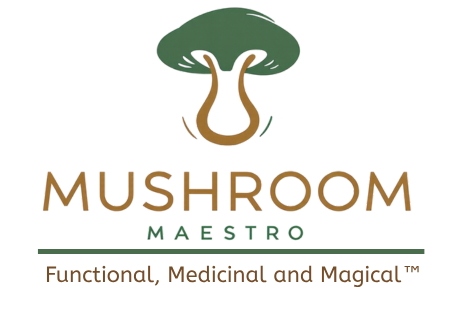In a world that never slows down, where constant connectivity and high expectations define our everyday experience, the quest for calm has become more than a luxury—it’s a necessity. For those exploring holistic wellness strategies, few remedies have endured as gracefully or as effectively as reishi tea. Revered in Eastern medicine for centuries, the focus on reishi tea preparation today is not just about honoring tradition, but also about unlocking a powerful natural ally in our modern pursuit of stress relief and mental clarity.
You may also like: The Essential Guide to Reishi Mushroom Benefits: How to Use Reishi Mushroom Powder for Stress Relief and Adaptogenic Support
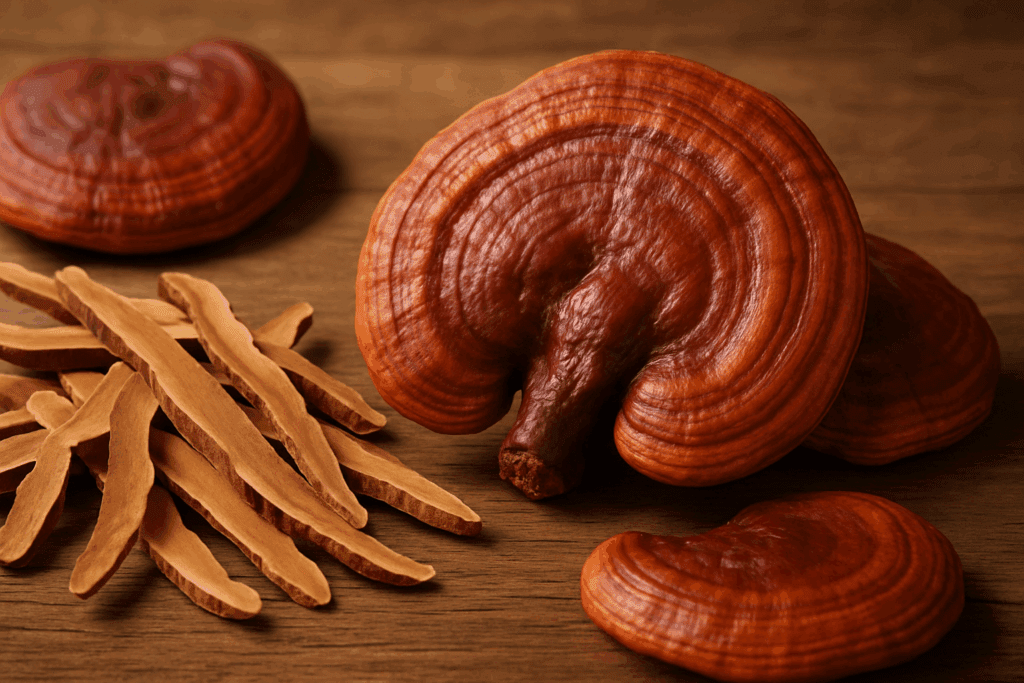
Understanding the Power of Reishi: The Mushroom of Immortality
Ganoderma lucidum, commonly known as reishi, has been hailed across Chinese, Japanese, and Korean medicinal traditions as the “mushroom of immortality.” Its status is not a poetic exaggeration but a reflection of its long-documented therapeutic potential. Rich in beta-glucans, triterpenes, and polysaccharides, reishi exerts immunomodulatory effects that support the body’s ability to regulate stress hormones, balance energy, and reduce systemic inflammation. These properties make reishi a natural choice for adaptogenic support—a term used to describe substances that help the body adapt to physical, chemical, and biological stressors. What sets reishi apart is its profound impact on the central nervous system. Studies have shown that it promotes relaxation without sedation, fostering an internal environment conducive to clarity and resilience. It’s precisely these characteristics that make reishi tea such a favored preparation for those seeking non-pharmacological methods for stress-relief and anxiety support.
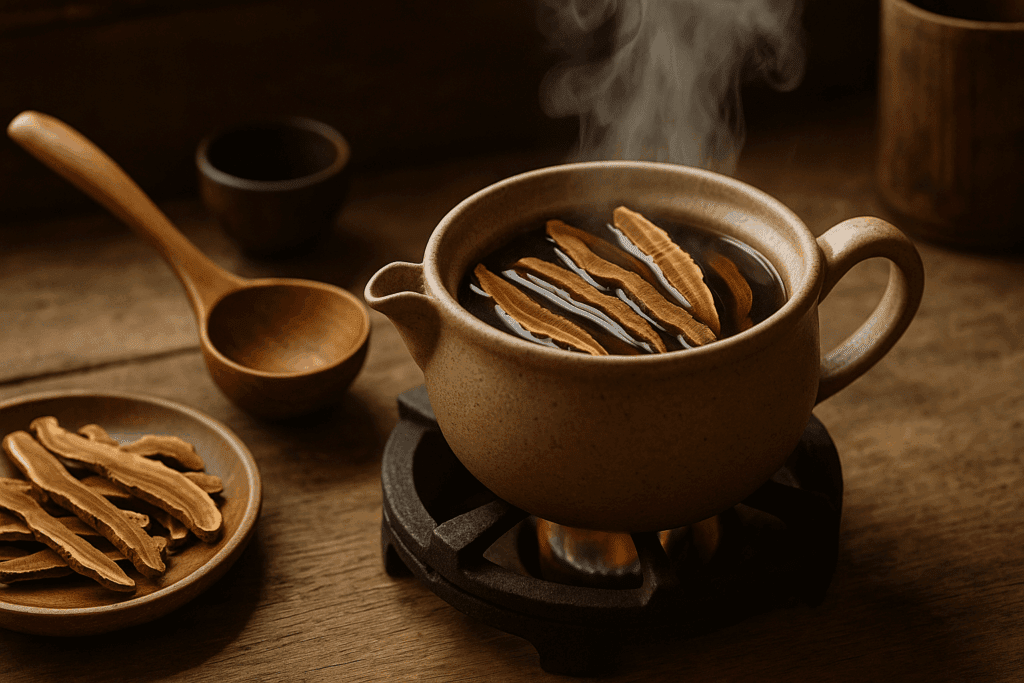
The Ancient Art of Reishi Tea Preparation: Rooted in Ritual and Wellness
The process of reishi tea preparation is as meditative as the beverage itself is restorative. Traditionally, the mushroom is sliced or ground and then simmered for an extended period, sometimes for up to two hours. This slow brewing process is crucial, as it allows for the full extraction of the bioactive compounds within the dense fungal tissue. This deliberate, slow method invites the practitioner into a state of intentionality—creating a natural bridge between action and mindfulness.
Modern variations of reishi tea preparation adapt these time-honored techniques into more accessible formats, including using pre-dried reishi slices, powdered extracts, or concentrated decoctions. While the methods may vary, the essence remains the same: a preparation rooted in purpose, seeking to connect body and mind through a functional, plant-based elixir. In this way, reishi tea is more than a beverage; it is a wellness practice encoded in the simplicity of hot water, a fungal bloom, and a moment of stillness.
Adaptogenic Mushrooms and Their Role in Stress Reduction
Reishi is not the only mushroom to earn its place in the pantheon of adaptogens, but it is arguably the most studied and celebrated for its stress-mitigating properties. Other adaptogenic mushrooms like cordyceps, lion’s mane, and chaga also offer their own unique benefits. Cordyceps is known to enhance stamina and vitality, lion’s mane supports cognitive health, and chaga contributes antioxidant power to immune defense. Yet it is reishi that commands special attention for its sedative and balancing effects on the HPA (hypothalamic-pituitary-adrenal) axis.
Chronic stress disrupts the normal rhythm of the HPA axis, leading to imbalances in cortisol and adrenaline levels. These disruptions often result in symptoms such as anxiety, insomnia, brain fog, and low energy. Reishi helps to modulate these effects by tonifying adrenal function and promoting a parasympathetic nervous system response—the system responsible for rest and digestion. This is why reishi tea, particularly when taken in the evening, can be a profound tool for unwinding and supporting natural sleep rhythms without dependency or next-day grogginess.
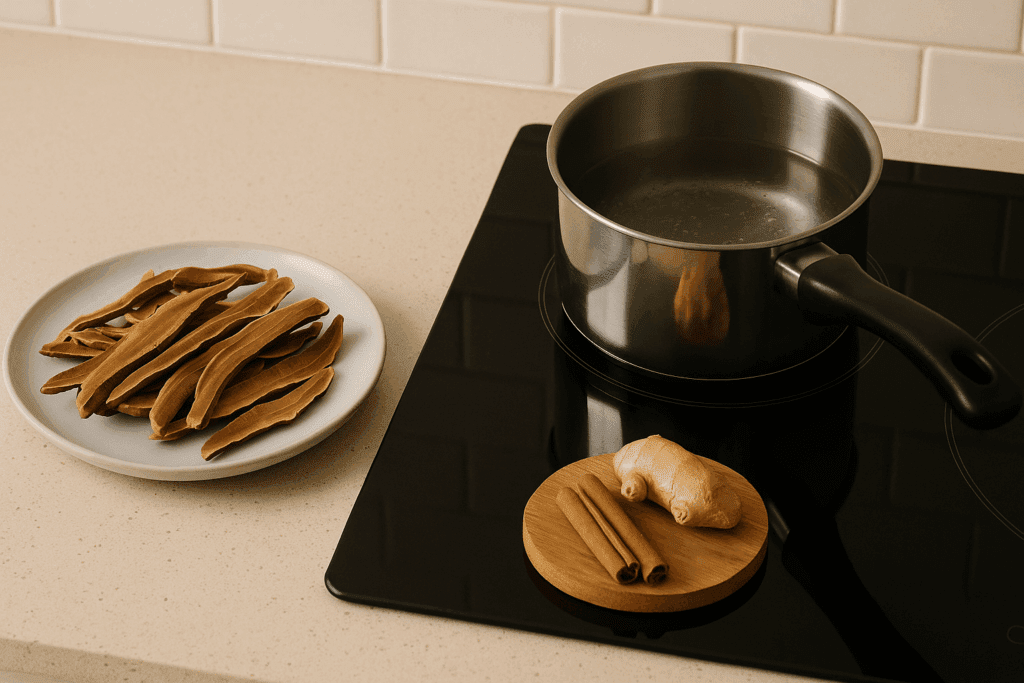
How to Make Ganoderma Lucidum Tea at Home
Learning how to make Ganoderma lucidum tea begins with understanding the ingredient itself. Reishi mushrooms can be found in a variety of forms, including whole dried mushrooms, sliced segments, powders, and dual-extraction tinctures. For traditional tea-making, dried slices or whole pieces are preferred, as they provide the most authentic flavor and full-spectrum benefits.
To make a basic decoction, begin by simmering 3 to 5 grams of reishi slices in about four cups of water. Use a stainless steel or ceramic pot to avoid chemical leaching. Bring the water to a gentle boil, then reduce the heat and allow the tea to simmer for 45 to 90 minutes. The result will be a dark, slightly bitter liquid that carries a woodsy, earthy aroma. Some choose to strain the mushroom pieces and store the tea in glass containers in the refrigerator for up to a week, reheating portions as needed.
The bitterness of the tea is a hallmark of its potency, but for those who are new to the flavor, adding natural flavor enhancers such as ginger, orange peel, cinnamon, or a teaspoon of honey can improve palatability without compromising its benefits. Reishi tea is not meant to be consumed like a sweetened beverage; rather, it is intended as a tonic, one that nourishes the body with consistent and mindful use.
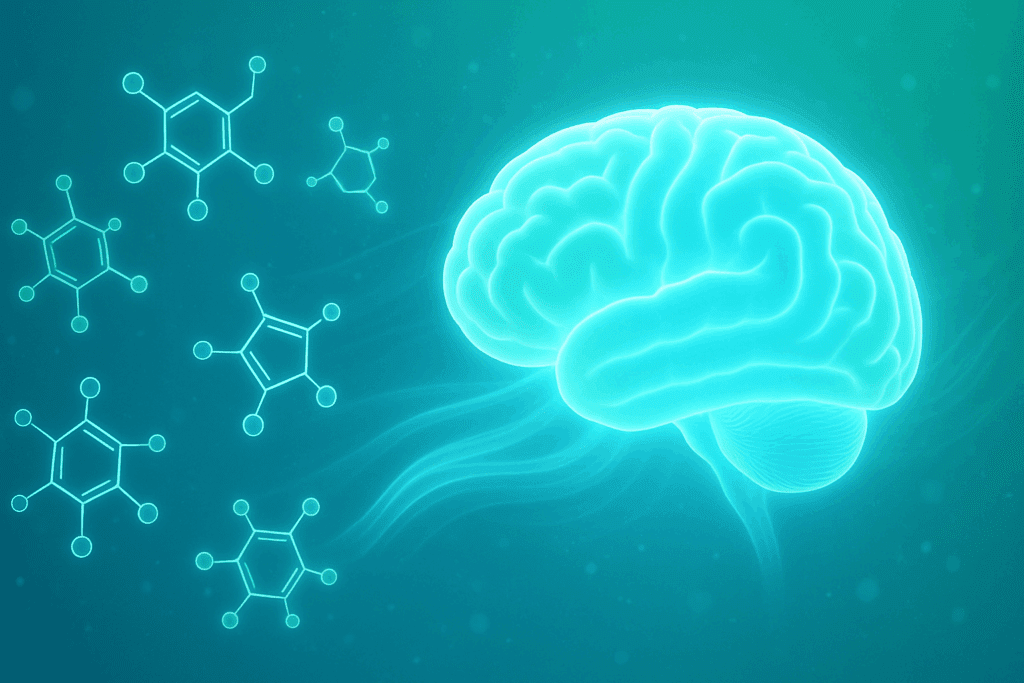
The Science Behind Reishi’s Stress-Relieving Effects
One of the most compelling reasons to integrate reishi tea into a stress-relief protocol lies in its growing scientific validation. Research has identified multiple pathways through which reishi exerts anxiolytic and adaptogenic effects. A 2014 study published in the journal Pharmacology Biochemistry and Behavior found that reishi extract significantly reduced anxiety-like behavior in rodents, likely due to its modulation of GABAergic signaling—the same neurotransmitter system targeted by many anti-anxiety medications.
Beyond its action on neurotransmitters, reishi’s anti-inflammatory and antioxidant properties contribute to its stress-modulating profile. Chronic psychological stress is closely associated with oxidative stress in the brain and peripheral tissues, which can impair cognitive function and immune response. By scavenging free radicals and reducing neuroinflammation, reishi creates a biochemical environment conducive to equilibrium. Additionally, reishi’s ability to regulate cytokines and improve mitochondrial function means it supports not just emotional wellbeing but systemic resilience.
Timing and Ritual: When and How to Make Reishi Tea Most Effective
The timing of reishi tea preparation can influence its effectiveness, particularly when integrated into a daily routine. Because of its calming effects, reishi tea is best consumed in the evening or late afternoon, ideally as part of a wind-down ritual. This could mean brewing a fresh cup while preparing dinner, sipping it during quiet reading time, or drinking it as a gentle cue for the body to transition into sleep mode.
Including intention in your tea ritual can significantly enhance its impact. Creating a dedicated space, even a small one, for tea preparation and consumption invites mindfulness and grounds the experience in self-care. Lighting a candle, playing soft instrumental music, or simply sitting in silence with your cup allows for a sensory immersion that amplifies reishi’s calming effects. It transforms the act from a nutritional task into a holistic healing moment—a micro-retreat from the rush of modern life.
Make Reishi Tea a Cornerstone of Your Self-Care Practice
To truly benefit from reishi, consistency is key. Reishi tea is not a quick-fix solution but a cumulative wellness tool. By making reishi tea a regular part of your self-care practice, you align with the traditional use of the mushroom as a tonic—something consumed regularly over time to build strength, stamina, and serenity. This is where the distinction between medicine and nourishment becomes blurred, and where functional foods become powerful allies in stress management.
One of the benefits of making reishi tea a daily or weekly habit is that it introduces a dependable rhythm into your life. Even on days of chaos or high tension, the simple act of pausing to prepare your tea becomes an anchor. Over time, the body begins to associate this ritual with relaxation, making the physiological benefits even more pronounced through the conditioning of neural pathways.
Reishi Tea Preparation for Busy Lifestyles: Practical Tips
Incorporating reishi tea into a hectic schedule may seem challenging, but modern conveniences can make the process seamless. One approach is to prepare a large batch of tea at the beginning of the week. This batch can be stored in a glass pitcher and kept in the refrigerator. Portions can then be heated as needed, saving time without sacrificing potency.
For those who travel or spend long hours at the office, reishi mushroom powders or instant tea sachets offer a convenient alternative. These can be mixed with hot water on the go and often combine other supportive adaptogens such as ashwagandha or tulsi. While they may not offer the same depth of extraction as slow-simmered preparations, they still deliver meaningful benefits and are better than going without.
Another option is to use a slow cooker or pressure cooker for reishi tea preparation. This method allows for longer extraction times with minimal supervision, making it perfect for multi-taskers who still want to prioritize their wellbeing. Simply set the cooker in the morning, and by evening, a therapeutic brew awaits.
Cultural Contexts: The Symbolism and Spiritual Role of Reishi
In ancient Chinese medicine, reishi was more than a tonic—it was a sacred symbol of divine harmony, longevity, and spiritual insight. Taoist monks regarded it as an essential tool in meditation practice, helping to calm the mind and stabilize inner energy or qi. These associations are not merely symbolic but reflect centuries of experiential understanding. By promoting a state of calm alertness, reishi helps bridge the physical and the metaphysical, the known and the intuitive.
In contemporary wellness spaces, this spiritual resonance has found new interpretations. Reishi tea is often used in moon rituals, sound baths, and yoga sessions to deepen introspection and open the channels of emotional processing. This convergence of ancient and modern makes reishi a timeless ally in the pursuit of inner peace and expanded awareness. It invites us to see stress not only as a physiological event but as a soul-level signal for recalibration.
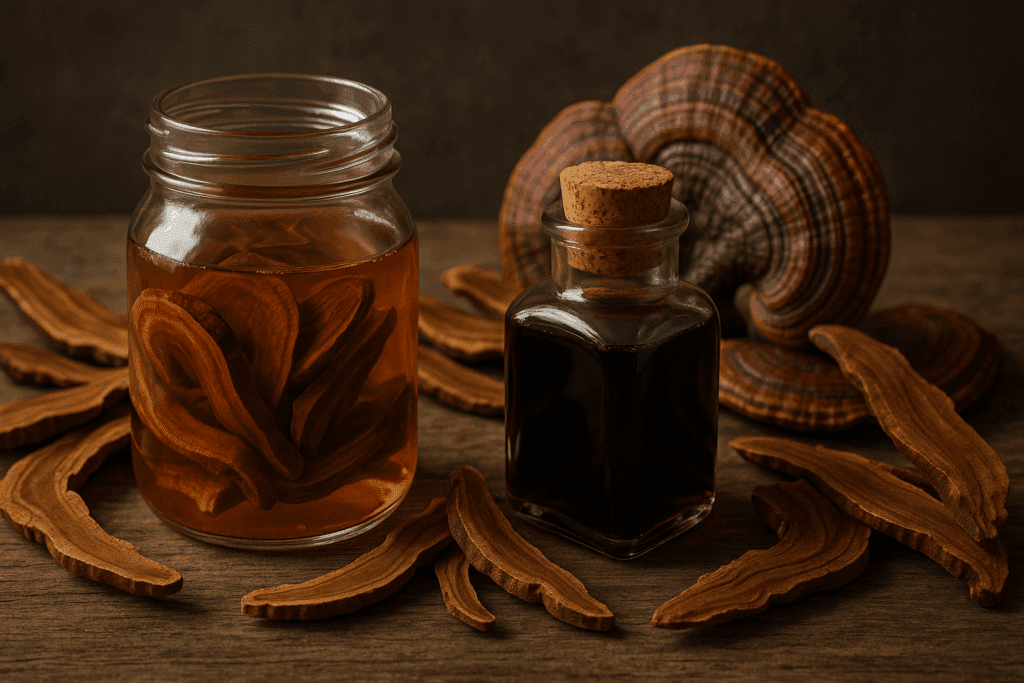
Reishi Tea Preparation Techniques for Enhanced Bioavailability
While the standard decoction is effective, optimizing your reishi tea preparation can elevate its benefits further. One method is the dual-extraction technique, which combines both water and alcohol to extract a broader spectrum of compounds. The water extracts polysaccharides, while the alcohol pulls out fat-soluble triterpenes. Combining the two creates a more potent and balanced elixir.
Another approach involves pairing reishi with synergistic herbs. Adding adaptogens like licorice root, rhodiola, or holy basil can enhance the overall effect, tailoring the tea to your individual stress response. Additionally, incorporating a healthy fat source such as coconut oil or ghee can improve the absorption of fat-soluble compounds in the mushroom.
Some enthusiasts even blend their cooled tea with raw cacao, almond milk, and spices to create an adaptogenic latte that feels indulgent while remaining profoundly therapeutic. These creative interpretations preserve the integrity of reishi while expanding its sensory and nutritional appeal.
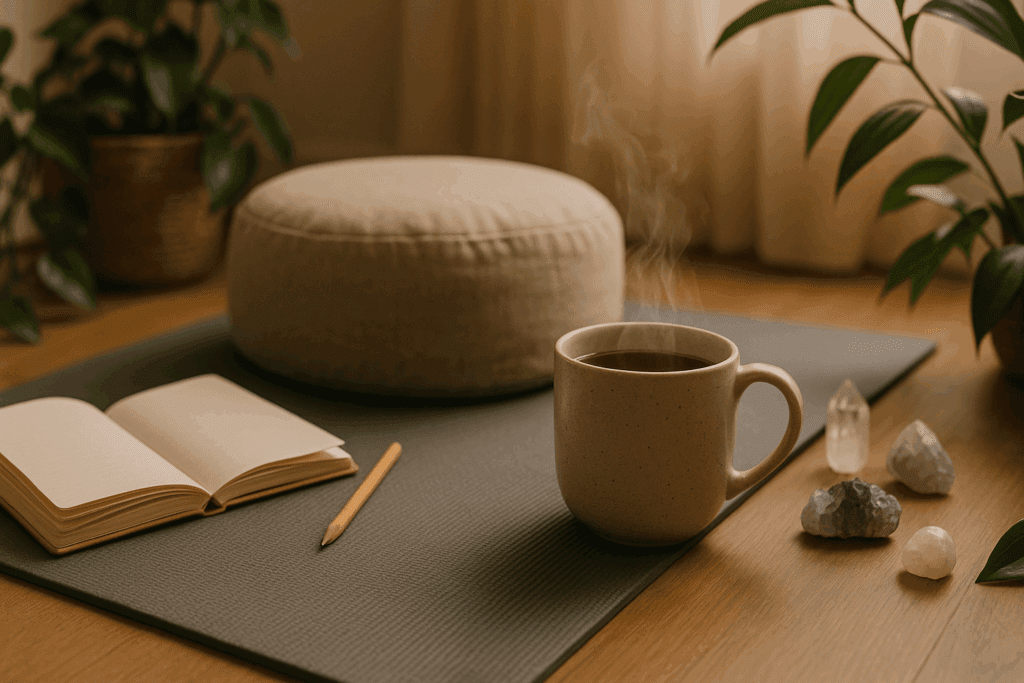
Integrating Reishi Tea into a Holistic Stress Management Plan
Reishi tea should not be viewed in isolation but as one component of a multi-dimensional approach to stress relief. Complementing your tea ritual with practices such as meditation, breathwork, physical movement, and sleep hygiene creates a synergistic framework that amplifies the effects of each element. For example, sipping reishi tea before a meditation session can help quiet the mind more efficiently, while drinking it after a yoga flow can extend the parasympathetic activation initiated by physical release.
Nutrition also plays a vital role in how well your body responds to stress and absorbs herbal medicine. A diet rich in whole foods, fermented vegetables, and omega-3 fats supports gut health and enhances the effectiveness of adaptogens. This holistic interplay between internal and external practices sets the stage for enduring calm and resilience.
The Future of Functional Fungi in Modern Wellness
As the popularity of functional mushrooms continues to rise, research and innovation in the realm of adaptogenic medicine are gaining momentum. Scientists are now examining how reishi and its fellow fungi influence the gut-brain axis, modulate immune checkpoints, and even regulate gene expression. This evolving science suggests that the full power of these mushrooms is still unfolding.
In the consumer market, we see this evolution reflected in new product lines that blend tradition with technology—reishi-infused beverages, mushroom coffees, and even functional skincare. These innovations speak to a growing recognition of reishi’s value not just as a supplement, but as a cornerstone of integrative wellness. By continuing to explore, honor, and refine reishi tea preparation, we preserve a powerful tool for restoring balance in an unbalanced world.
Frequently Asked Questions: Exploring the Benefits and Techniques of Reishi Tea Preparation
What makes reishi tea preparation essential for maximizing health benefits?
Reishi tea preparation is crucial because the way you brew the mushroom directly affects the bioavailability of its therapeutic compounds. Traditional simmering methods allow water-soluble polysaccharides and immune-supporting beta-glucans to be fully extracted, ensuring you gain the maximum stress-relieving and adaptogenic benefits. Many commercial shortcuts, such as quick brewing or using boiling water over powders, often fail to unlock the full medicinal potential. In-depth reishi tea preparation also offers an opportunity to engage mindfully with the process, reinforcing a ritual that supports emotional wellness as much as physical health. Carefully preparing the tea helps preserve its antioxidant, anti-inflammatory, and neurological benefits in a way that rushed methods simply cannot replicate.
Can I use different types of water for reishi tea preparation, and does it matter?
Yes, the type of water you use for reishi tea preparation can subtly but meaningfully influence the final product’s efficacy and taste. Ideally, filtered or spring water should be used because tap water often contains chlorine and other additives that can interfere with the extraction of delicate compounds. The mineral content of spring water can enhance the flavor and may even help extract certain triterpenes more effectively. Distilled water, while pure, may result in a slightly flatter-tasting brew because of its lack of minerals. Paying attention to water quality during reishi tea preparation is an often-overlooked but impactful detail that supports optimal outcomes.
What advanced techniques can enhance how to make Ganoderma lucidum tea even more potent?
Those looking to maximize the potency of their reishi tea should consider dual-extraction techniques, which involve both water and alcohol. After performing a long water decoction to extract polysaccharides, the remaining mushroom material can be steeped in high-proof alcohol to draw out fat-soluble triterpenoids. Blending the two extracts results in a broad-spectrum, highly therapeutic beverage. Another advanced method for how to make Ganoderma lucidum tea more effective includes adding synergistic herbs such as schisandra berries or ashwagandha during the simmering process. These combinations not only enhance flavor but also strengthen the tea’s adaptogenic properties, creating a more comprehensive support system for stress resilience and immune function.
How does reishi tea preparation differ for powdered extracts compared to whole mushroom slices?
When using powdered extracts, reishi tea preparation shifts dramatically in technique and timing. Unlike whole mushroom slices, which require long decoctions of 45 minutes to 2 hours, reishi powders often dissolve in hot water in just a few minutes. However, not all powders are created equal; high-quality dual-extracted powders retain both water- and alcohol-soluble compounds. To ensure maximum benefit, it’s important to choose a powder that clearly states dual extraction and to stir it thoroughly in hot but not boiling water. Although quicker, this method demands just as much care in sourcing quality products to truly capture the benefits associated with traditional brewing.
Can you explain why “make reishi tea” at home is considered more effective than buying ready-made products?
Choosing to make reishi tea at home allows complete control over the quality, concentration, and authenticity of the final brew. Many ready-made reishi teas available commercially are either diluted with fillers or subjected to high-heat pasteurization, which can destroy some of the more delicate medicinal compounds. When you make reishi tea yourself, you decide the strength of the decoction, the ingredients you blend, and the overall ritual, enhancing not just physical but psychological engagement with the healing process. Home preparation also ensures that the tea is free from unnecessary preservatives or artificial flavorings, preserving its holistic and organic nature. By taking ownership of the process, consumers can create a more personalized and potent stress-relief ally.
Are there any surprising flavor pairings that complement how to make Ganoderma lucidum tea more enjoyable?
Absolutely, while reishi tea has a distinct earthy bitterness, creative flavor pairings can elevate the drinking experience without diminishing its health value. For instance, brewing it with slices of dried apple and cinnamon sticks lends a naturally sweet and spicy undertone that masks the bitterness beautifully. Adding fresh ginger not only harmonizes the flavor but also brings added anti-inflammatory benefits. Experimenting with lemongrass or lavender flowers can introduce a floral brightness that complements the deep umami of reishi. Exploring such combinations while learning how to make Ganoderma lucidum tea can transform each cup into a gourmet wellness experience, adding excitement and personalization to the ritual.
What role does temperature play when you make reishi tea for maximum benefits?
Temperature management is critical when you make reishi tea, as excessive heat can degrade sensitive nutrients while insufficient heat may not extract the beneficial compounds fully. Ideally, reishi slices should be simmered gently at just below boiling\u2014around 190 to 200 degrees Fahrenheit. This temperature ensures polysaccharides, triterpenes, and antioxidants are effectively drawn out without structural breakdown. Conversely, violently boiling the tea at high temperatures for extended periods can alter the molecular integrity of certain triterpenoids, reducing their effectiveness. Monitoring and maintaining a steady simmer when you make reishi tea enhances both the flavor profile and the potency of the final product, optimizing its role in stress-relief protocols.
How is reishi tea preparation evolving with new health trends and technologies?
In response to growing demand for functional foods and beverages, reishi tea preparation is evolving in fascinating ways. One trend involves microencapsulation technology, which protects delicate compounds during brewing and enhances absorption once consumed. Another emerging innovation is the integration of reishi into cold-brewed adaptogenic teas, expanding its use beyond traditional hot decoctions. Smart kettles now allow users to program precise temperatures and brewing times tailored to reishi\u2019s unique needs, automating optimal preparation. Additionally, new blends featuring reishi with complementary nootropics like L-theanine are creating teas that not only relax but also enhance cognitive clarity. These developments reflect a broader recognition of reishi\u2019s value and a growing emphasis on making its benefits accessible through modern convenience.
What are some common mistakes to avoid during reishi tea preparation?
One common mistake during reishi tea preparation is using too little mushroom material, resulting in a weak and ineffective brew. Another is boiling at excessively high temperatures, which can degrade the beneficial compounds rather than extract them. Impatience is another culprit; rushing the process by steeping for only a few minutes\u2014instead of slow simmering\u2014yields a less potent product. Storing reishi tea improperly, such as in plastic containers or exposing it to direct sunlight, can also lead to oxidation and loss of efficacy. Mindfully avoiding these pitfalls ensures that each step of the reishi tea preparation process supports maximum therapeutic potential and honors the tradition of this revered adaptogenic mushroom.
How can integrating reishi tea preparation into daily life impact long-term wellbeing?
Integrating reishi tea preparation into a daily self-care routine fosters a sense of groundedness and intention that extends far beyond the act of brewing itself. Establishing a consistent practice around making and drinking reishi tea creates daily touchpoints for mindfulness, encouraging reflection, emotional regulation, and gratitude. Over time, the cumulative benefits of reduced oxidative stress, enhanced immune resilience, and improved adrenal balance can support better sleep patterns, stronger emotional fortitude, and even cognitive sharpness. As the body begins to associate the ritual of reishi tea preparation with relaxation and restoration, it can amplify the parasympathetic nervous system response, deepening the experience of calm. This compounding effect turns a simple cup of tea into a cornerstone of lifelong wellbeing and resilience.”
A Calm Cup Awaits: Embracing Reishi Tea as Daily Ritual
At its core, stress-free living is not a destination but a practice—one that requires patience, self-awareness, and the willingness to slow down. In this context, reishi tea preparation becomes more than a health habit. It becomes a gesture of self-respect, a quiet rebellion against the noise, and an invitation to return to the essence of being.
Whether you are just beginning to explore how to make Ganoderma lucidum tea or are already weaving it into your daily rhythms, the path is the same: consistent, mindful, and lovingly intentional. So the next time stress begins to mount and your mind races with the unrelenting pace of modern life, pause. Put the kettle on. Prepare your reishi tea. And remember that within each cup lies a legacy of calm, a tradition of balance, and the quiet power to reclaim your peace.
